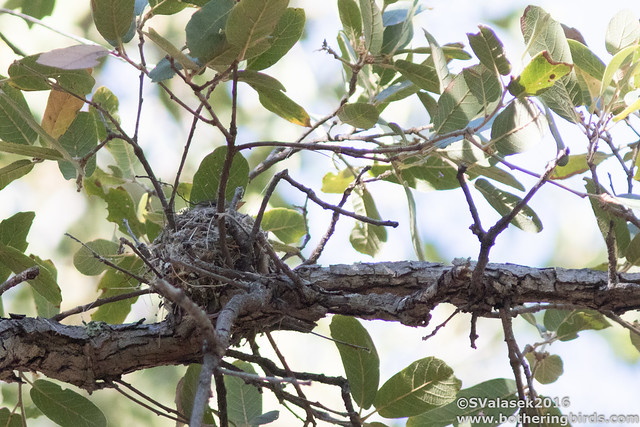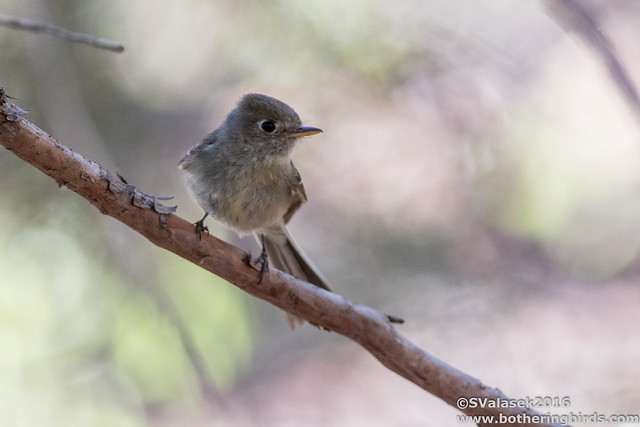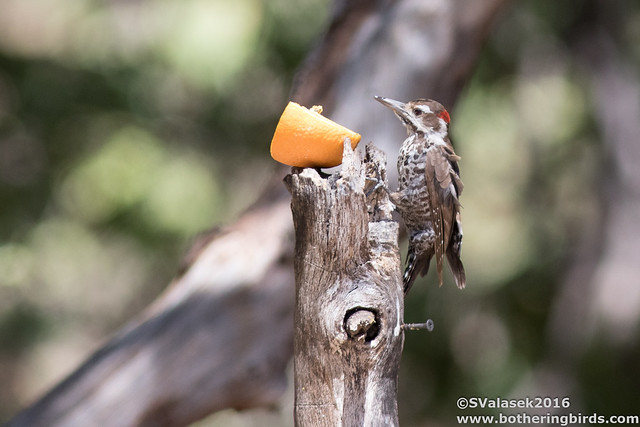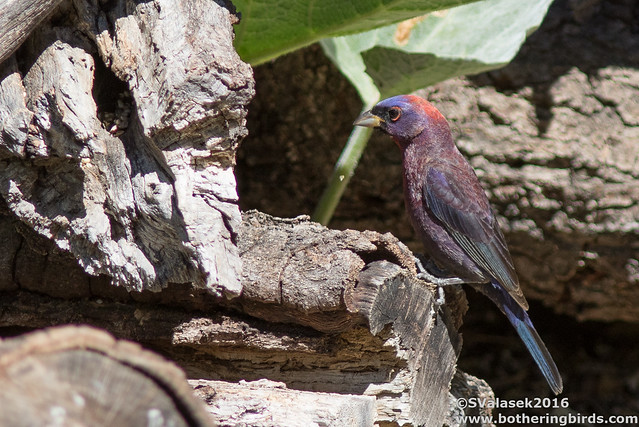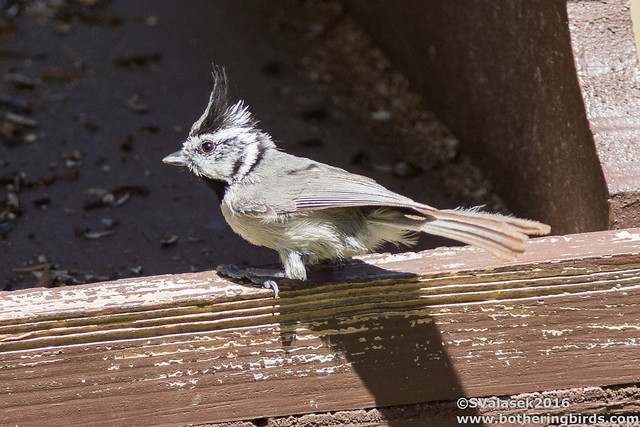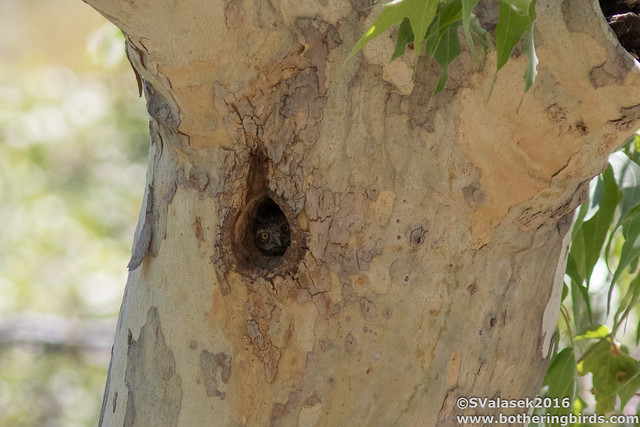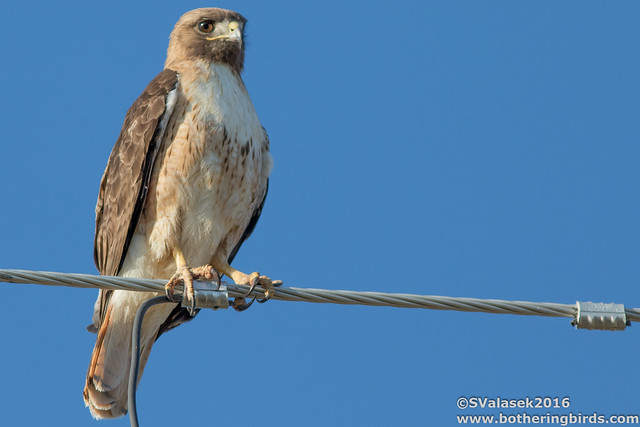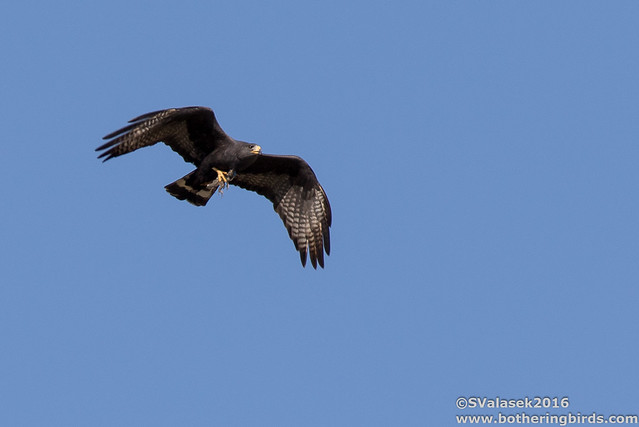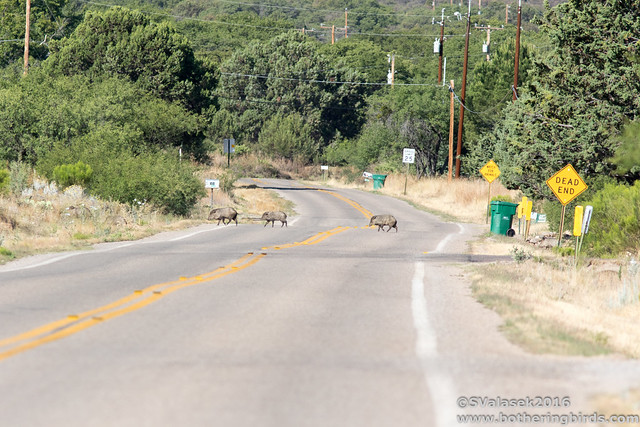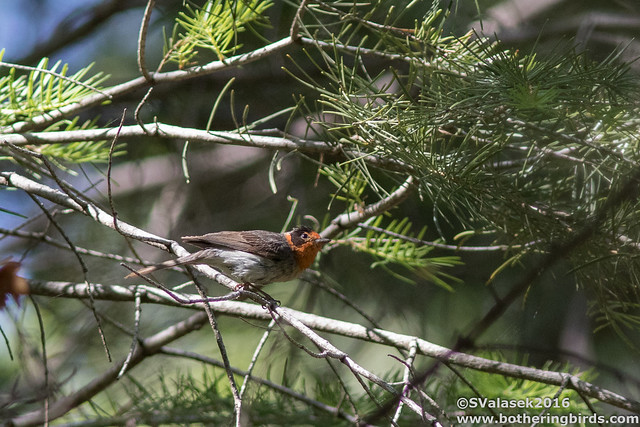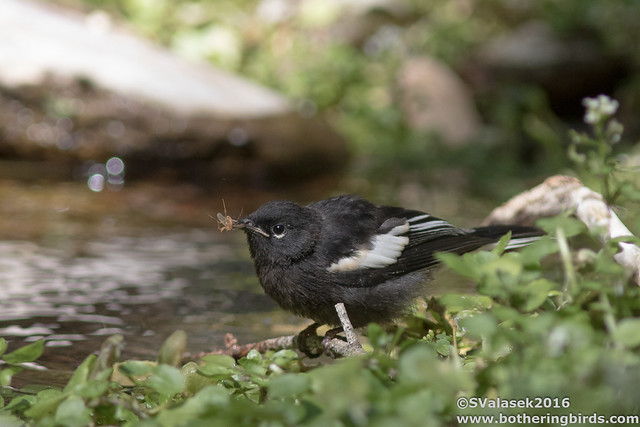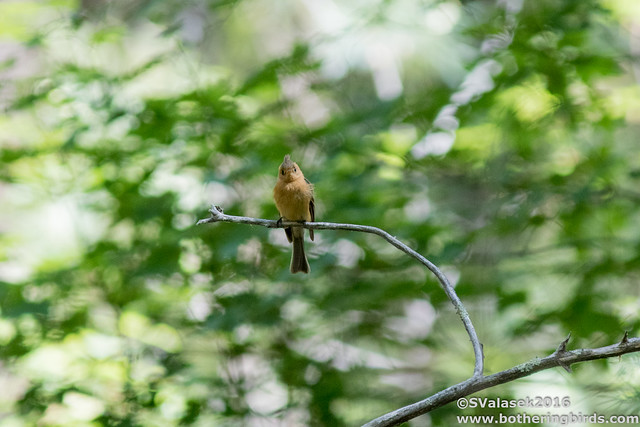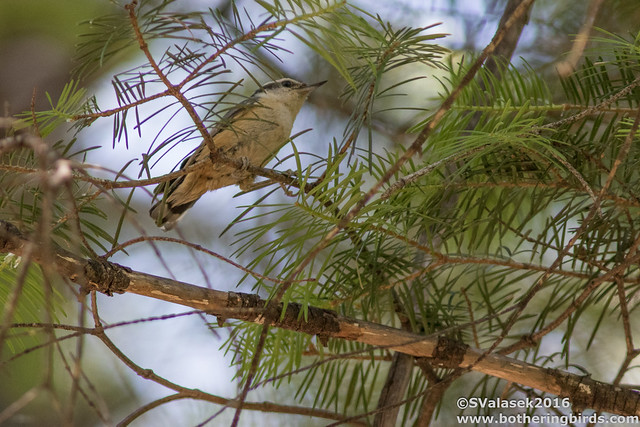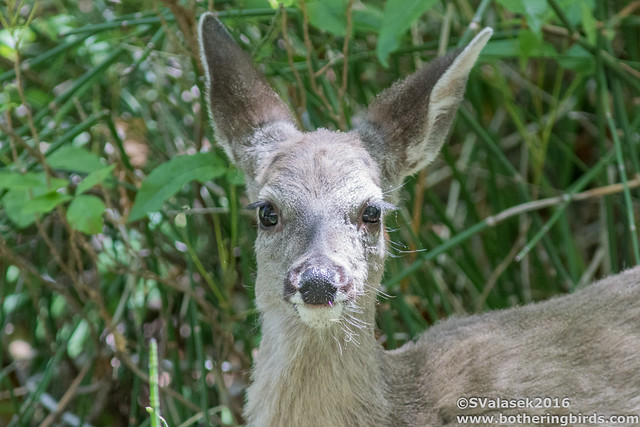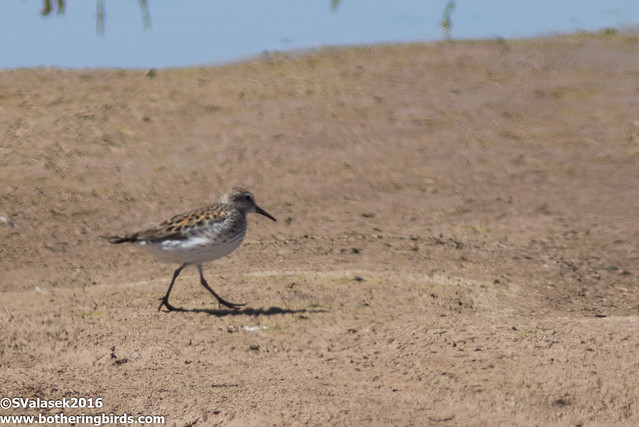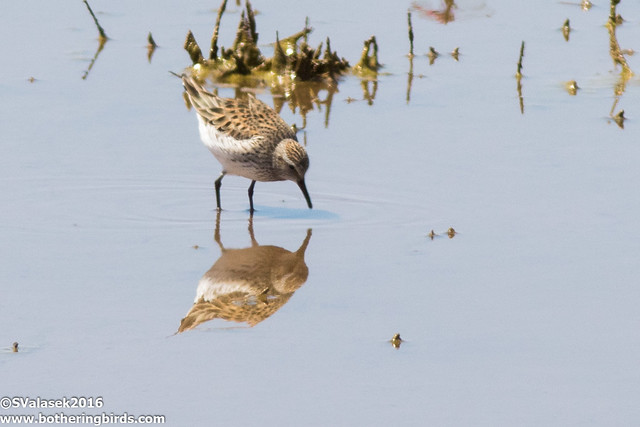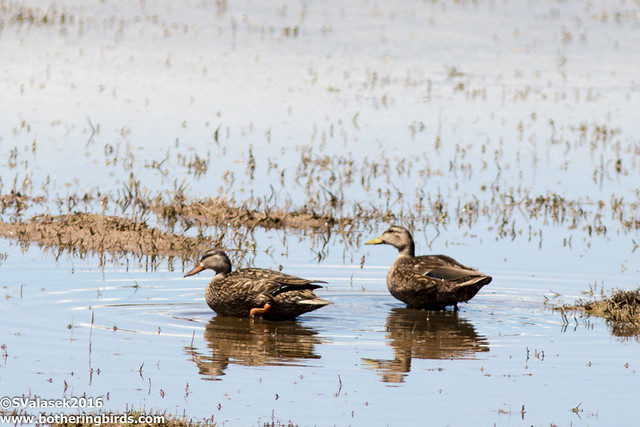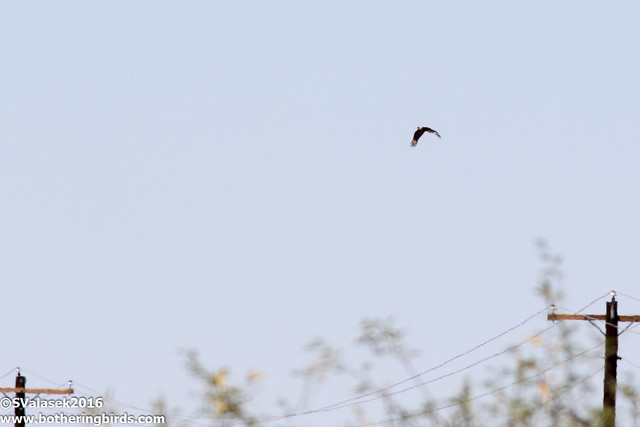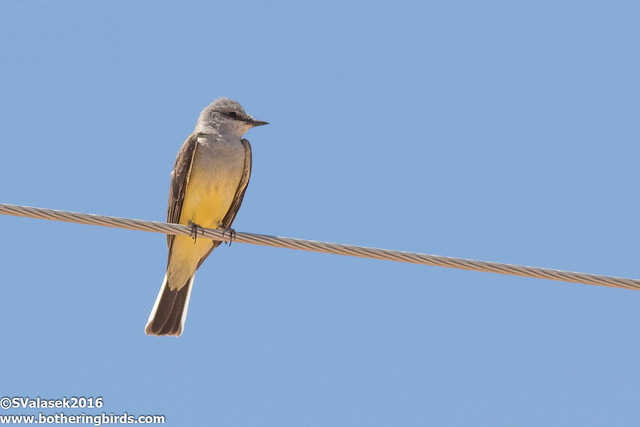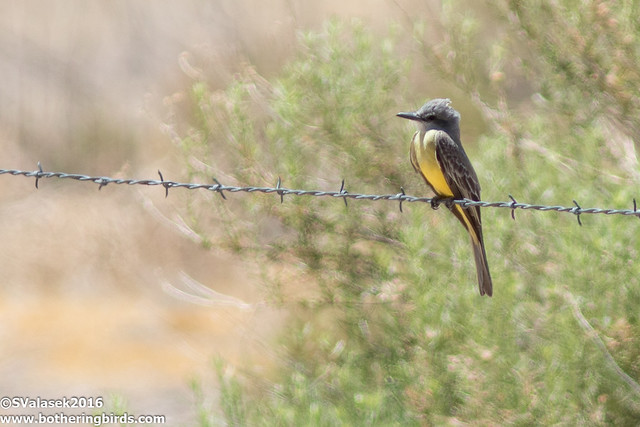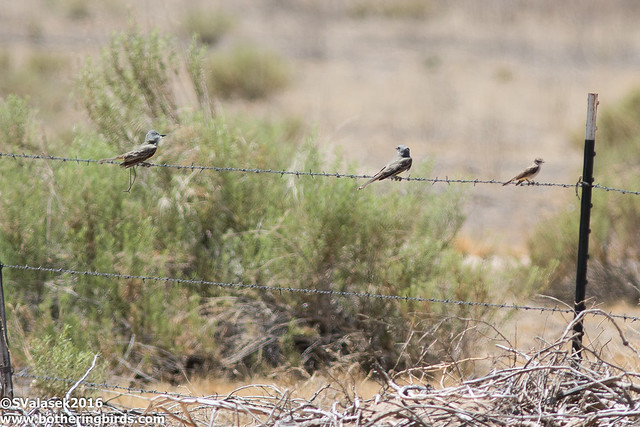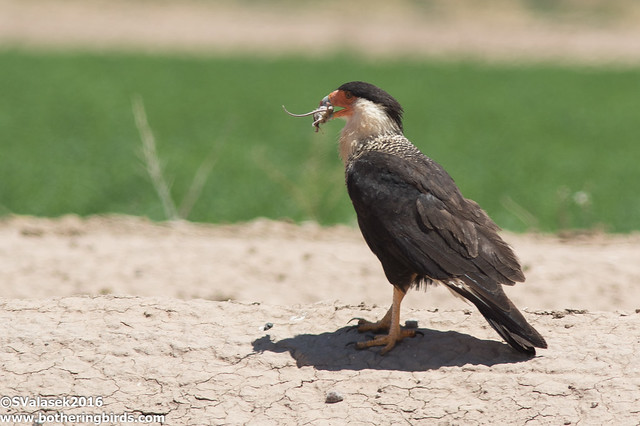In my last post, found here, I talked about the first part of my visit to the Southeastern corner of Arizona, centered around Sierra Vista. There were 2 rare birds that I wanted to twitch, Tufted Flycatcher and Slate-Throated Redstart. I got the Tufted Flycatcher the first day, and planned on driving East to the Chiricahuas and the Redstart, on the second. Or course there were other birds to see, and this part of the state is the Hummingbird Capital of the USA.
There are a few people in the area who host hummingbird feeders at their B&Bs or just their house. You can pay a nominal fee, $5 or sugar, to sit and watch for a bit. I stopped by the Beatty's Guest Ranch in lower Miller Canyon in Hereford. They have a few feeders with bleachers nearby and have been the home of some very rare hummingbirds in the past. The day that I went they only had the usual suspects: Broad-Billed, Black-Chinned and Magnificent Hummingbirds.
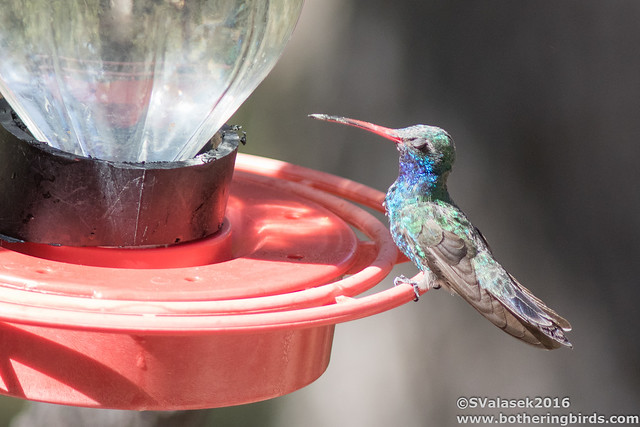 |
| Broad-Billed Hummingbird - Miller Canyon, Arizona |
They also have Spotted Owls on their property, I was giving directions up the canyon to where they were seen the day before, but I spent an hour scanning every tree and never saw them. I'm thinking that I wasn't up far enough. Instead I went below their property a bit and got to see a Northern Goshawk nest.
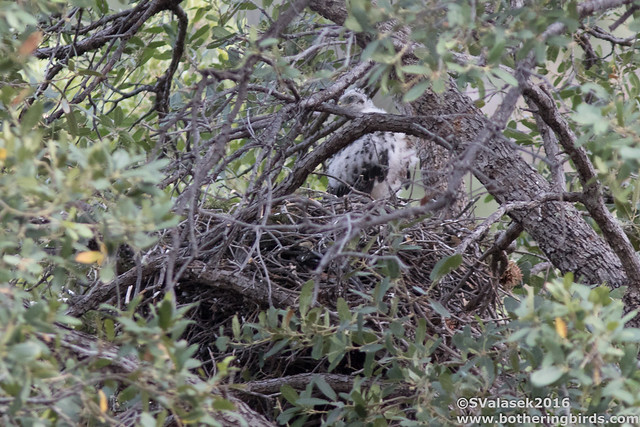 |
| Northern Goshawk Chick - Miller Canyon, Arizona |
I saw just the one chick, but it was hidden very well and there could have been another. I didn't want to get any closer because (I'm assuming) dad was watching out from a nearby tree.
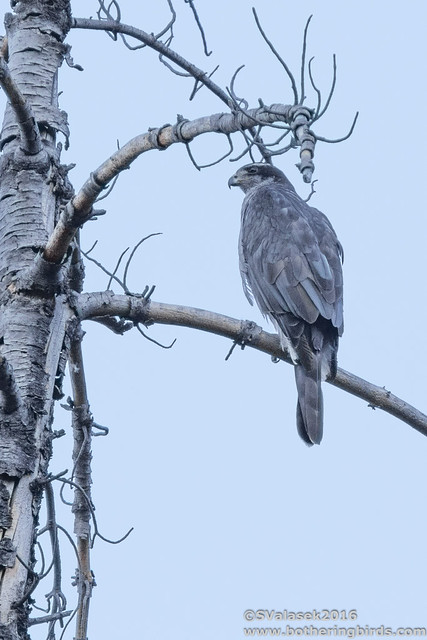 |
| Northern Goshawk - Miller Canyon, Arizona |
The Sun was setting and I had a bit of a drive ahead of me, so I hopped into the van and drove east towards Tombstone. I was surprised by the amount of wildlife on the road. I saw foxes, coyotes, javelinas, Lesser Nighthawks, mice and 4 rattlesnakes. I stopped to let one get across, these were the first wild rattlesnakes that I've seen.
I finally made it into the Chiricahuas and drove over the worst washboard roads that I've ever been on. Fillings barely intact I drove by the Slate-Throated Redstart stake-out looking for a campground that was supposed to be just a mile or 2 away. I never found one and instead spent a restless night on a wide-part of the road. I wanted to be up before dawn since that's when the bird has been seen reliably, so the alarm came early. I had just short drive downhill to the location and I was there before 5am. It was already light and I sat waiting. There was supposedly a nest located beside the road and a hand "STRE" sign was scrawled on a rock. I sat there waiting and waiting but not much of anything was happening. I made my way next to a bush in order to get a better view to where I thought was the nest location when a bird appeared right next to me and starting screeching away. I got a glimpse of a plain, dark upper with a yellow belly. It looked like a juvenile Slate-Throated Redstart to me. I never managed a photo before it disappeared again. I stood around for another 90 minutes without another look. I walked back to my van for some breakfast and to wait for the Sun to make a proper appearance.
I walked back down to the spot around 7:30am and it was much busier now. There were some Painted Redstarts, Hutton's Vireos, House Wrens and Yellow-Eyed Juncos flying and calling about.
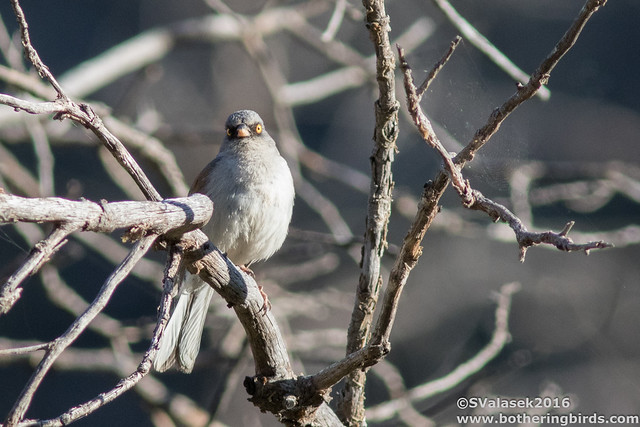 |
| Yellow-Eyed Junco - Chiricahua Mountains, Arizona |
At this time a van pulled up, too close to the nest location in my opinion, and a tour group of birders from Florida exited. They spread out looking for the bird, and anything else around. Then, just a minute or 2 later, I saw the Slate-Throated Redstart fly off and up the hillside from the road. We waited patiently and a few moments later it came down into the trees on the inside of the horseshoe bend and jumped around inside of some pine trees.
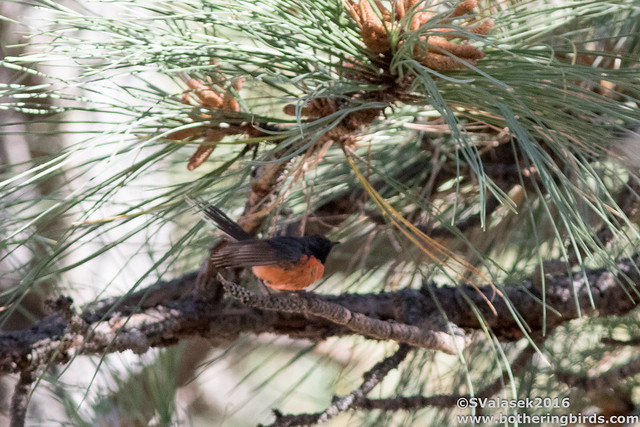 |
| Slate-Throated Redstart - Chiricahua Mountains, Arizona |
It never sat still long enough to get a really nice shot, but it did take the time to tell us what he really thinks about everyone bothering him.
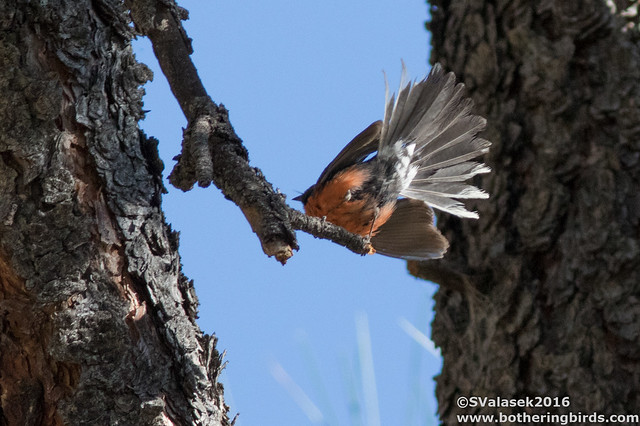 |
| Slate-Throated Redstart - Chiricahua Mountains, Arizona |
Supposedly there are 2 different STREs present, but nobody has had photos of 2 at the same time. I was satisfied with the looks that I had and the photos were good enough for a bird that can't stand still and sit outside of the shadows.
Instead of turning towards home, I thought that I would head towards the
Southwestern Research Station, which is run by the Smithsonian Museum of Natural History. They supposedly had some Blue-Throated Hummingbirds which I have wanted to see. And also the chance of seeing Elegant Trogons in the area. So I continued further into the mountains and further away from mobile phone signal and access to Google Maps (stupid me didn't have a paper one).
When I got to the research station, which is in a beautiful location and was really busy with people. I found the hummingbird feeders which were also really busy. Most of the Hummingbirds were Magnificents and Black-Chinned, but a few Blue-Throated were there too. These are another large hummingbird, 2nd in size only to the Magnificent that are found in the USA.
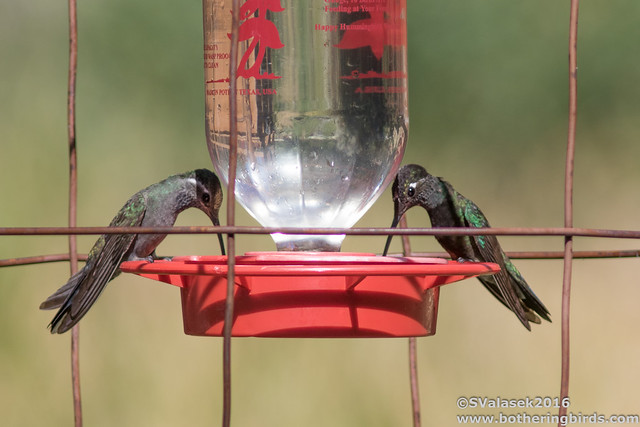 |
| Blue-Throated and Magnificent Hummingbirds - Southwestern Research Station, Portal Arizona |
Here's a good size comparison, Magnificent on the left and Black-Chinned on the right.
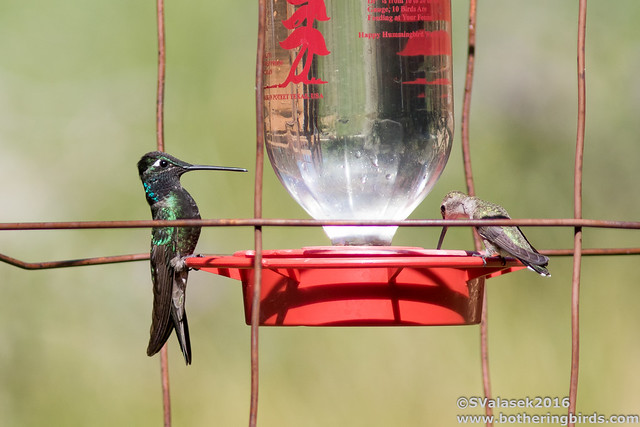 |
| Magnificent (L) and Black-Chinned (R) Hummingbirds - Southwestern Research Station, Portal Arizona |
The Blue-Throated Hummingbird were great to see. They would fly in making "peep" sounds.
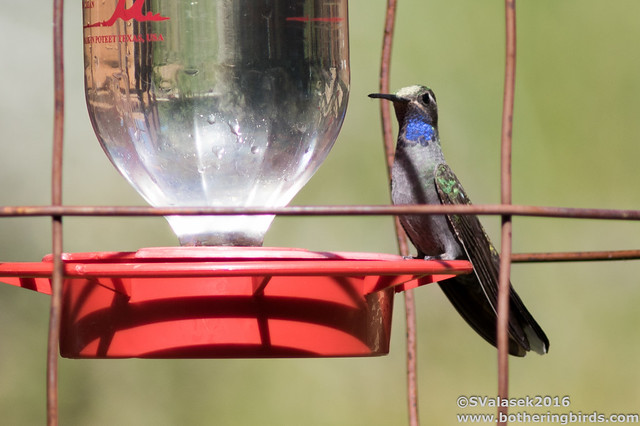 |
| Blue-Throated Hummingbird - Southwestern Research Station, Portal Arizona |
If you couldn't tell any other way, the BTHU have nice white eye-stripes or ears on the sides of their heads, but are much larger than a White-Eared Hummingbird would be.
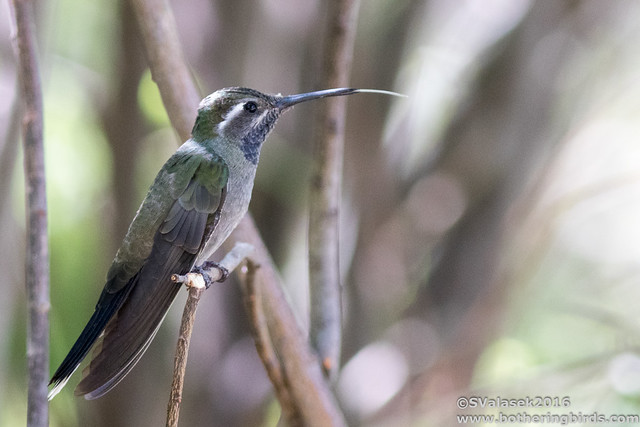 |
| Blue-Throated Hummingbird - Southwestern Research Station, Portal Arizona |
Not to focus and the larger ones, the Black-Chinned Hummingbirds are great to watch too.
 |
| Black-Chinned Hummingbird - Southwestern Research Center, Portal Arizona |
Since I was in the area I decided to visit the South Fork trail to try and see Elegant Trogon. One of the Florida birders that I met earlier said that they were there and saw 4 or 5, with one right from the carpark. Well, I made the drive and ended up not seeing or hearing any (seriously, the glove has been dropped Elegant Trogons!). But along the drive in I saw an American Redstart fly into the trees from the roadside, which gave me three Redstart species in one morning (Slate-Throated and Painted earlier)! And on my hike up the South Fork trail, which is in the bottom of a lovely canyon, I added a lifer, Rufous-Crowned Sparrow.
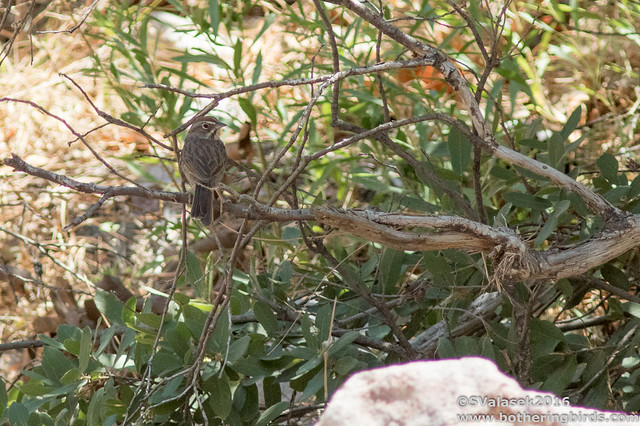 |
| Rufous-Crowned Sparrow - South Fork Trail, Portal Arizona |
Still having no access to data, and thus a map, I drove further East into Portal Arizona. At this point I was really tired, and a bit birded out. So I stopped at a tiny diner/convenience store and had some lunch and got directions back to the Interstate. Which oddly enough took me into New Mexico for a stretch, my first visit back since moving away 2 years ago. It was a long drive back towards home, but a successful 2 days birding. I would end up seeing 62 species with 6 lifers seen, and 2 of those ABA code 5 birds. The Sierra Vista and Chiricahua areas are beautiful locations that I can't wait to visit again.
As always, thanks for making it this far.
And I'd like to wish a happy 4th birthday to my son Benny!!!
Cheers!


